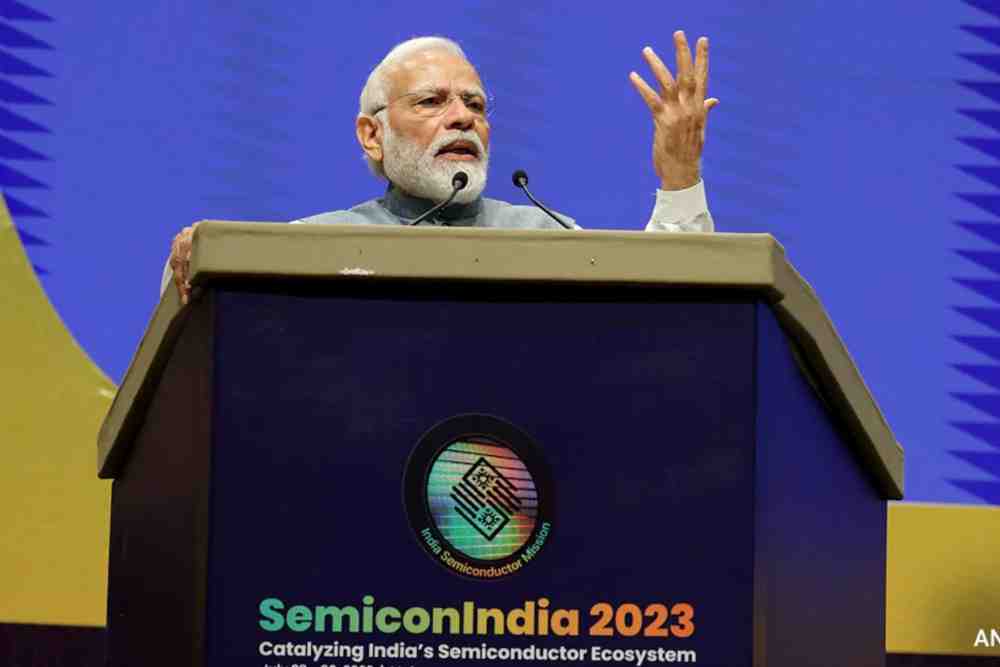Tata Group is reportedly considering entering India’s semiconductor sector. The industry conglomerate is submitting a proposal over the next 3 to 6 months for the Indian government’s semiconductor subsidy scheme.
According to a BL report citing close sources aware of the matter, Tata Group is evaluating business plans across the value chain for semiconductors. In addition to the Centre’s subsidy, various State governments, including Gujarat, Karnataka and Tamil Nadu, are wooing Tata with various sops.

Earlier in May 2023, the Group had revealed its plans to enter the semiconductor segment and its search for its electronics manufacturing facility in Tamil Nadu’s Krishnagiri district.
Part of Tata’s $90-billion tech bet will be dedicated to partnerships with chip manufacturers and potentially launching an upstream chip fabrication platform. However, Tata had not applied for the first round of semiconductor and display fab proposals to the Centre, which took place in 2022.
The reports further stated that the conglomerate’s entry into the semiconductor sector would be a major boost to India’s efforts to become a global leader in semiconductor manufacturing.
To reach the semiconductor goal set by the country, India has been offering generous subsidies to attract investment in the semiconductor sector.

In an earlier interaction with BL, Raja Manickam, Chief Executive Officer, TATA Outsourced Semiconductor Assembly and Test (OSAT), had said India should not depend on multinational companies to pursue its ambitions to become a hub for semiconductor manufacturing but should encourage local players to take the lead.
India’s Semiconductor Goal

According to the available sources, the Indian semiconductor market was valued at approximately $23.2 Billion and is projected to reach $80.3 Billion by 2028, growing at a compound annual growth rate (CAGR) of 17.10% during the forecast period.
Recognizing the significance of the semiconductor industry, the Indian government has implemented various measures and policies. The ‘Make in India’ initiative, launched in 2014, primarily aims to boost manufacturing in India and establish the country as a global manufacturing hub. Several initiatives have also been launched to promote semiconductor production, including the Production Linked Incentive (PLI) scheme for the electronics sector. This scheme offers a $1.7 billion incentive package for companies establishing semiconductor manufacturing facilities in India, making it a ground-breaking initiative.
In December 2021, the Indian government announced a $10 billion package to incentivise the manufacturing of semiconductors in India. The first three proposals submitted to the India Semiconductor Mission were from Singapore-based IGSS Ventures, the International Semiconductors Consortium (ISMC), and a joint venture between Vedanta Group and Taiwan’s Foxconn.

On June 1, the India Semiconductor Mission reopened a fresh round of applications for setting up semiconductor and display fabrication units and seeking incentives.
On the other hand, the demand for semiconductors in India is around $24 billion, which is met entirely through imports. Reportedly, the Indian semiconductor market is also expected to reach $55 Billion by 2026, growing a CAGR of 20% during the period of 2022-26. Additionally, the industry is expected to generate more than 250,000 jobs in the sector.
